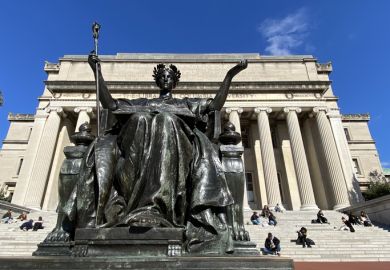The recent UK general election marked the arrival of an intergenerational politics that has been slowly building up since the financial crisis of 2008. Brought to a head by youthful resentment at Brexit, a disastrous Conservative election campaign and Labour leader Jeremy Corbyn’s unpredicted electoral success, this new dynamic has thrown the apparently settled question of how UK universities should be funded back up into the air.
For three decades after 1963’s Robbins report, policy development for UK higher education was an elite affair, conducted in commissions, review groups and the councils of quangos. However, the mass expansion of higher education that began in the late 1980s drew university funding into mainstream political debate.
Since the turn of the millennium, the vicissitudes of politics have meant that each of the UK’s main political parties has been committed at different times to both abolishing and increasing tuition fees. Yet universities have largely ridden out this turbulence. After the tuition fee regime was established by Tony Blair’s Labour government in 1998, it was extended and reformed, but never withdrawn. University finances have consequently been more stable than those of other parts of the public sector, most obviously local government, where austerity has cut deepest.
The 2017 general election disrupted this pattern, in part because Corbyn’s pledge to abolish tuition fees crystallised a wider sense of economic and political inequality for young people. Those in their twenties have seen their real wages fall and their debts rise in the past decade. Electoral turnout spiked sharply among 18- to 24-year-olds, but the swing to Labour was even higher among 25- to 40-year-olds. That was particularly true in London, where graduates have seen their rents soar and home ownership stretch out of reach. Labour increased its support among middle-class professionals, too, while at the same time older working-class voters shifted into the Conservative camp. As a consequence, age now trumps social class as a partisan electoral cleavage.
The first signs of this emergent post-crisis politics were seen in the US, where student loan debt now stands at $1.3 trillion (£1 trillion). This is an increase of 170 per cent since 2006, driven by rising tuition costs and falling public spending on higher education. Student loans now outstrip credit cards and automobile loans in US household debt, and this feeds through into increased loan default rates.
Bernie Sanders tapped into widespread millennial anger at this state of affairs in his recent run for the Democratic Party’s presidential nomination. His call for free tuition at public colleges and universities mobilised young people behind his campaign. Corbyn’s team took notice and replicated his pledge – rather than prioritising distributionally more progressive policies, such as reversing Conservative cuts to tax credits for low-income families. The fact that abolishing tuition fees would soak up billions of pounds of public spending is beside the point for the Labour leadership: the policy has become a politically potent symbol of tackling intergenerational injustices and restoring the social democratic welfare state.
After the Liberal Democrats infamously committed in 2010 to abolish tuition fees only to become part of a government that tripled them, a more centrist politician probably could not have made such a pledge and been taken seriously. But Corbyn wore a badge of authenticity, and his relative electoral success, resulting in a hung parliament, now leaves higher education funding policy in no-man’s-land.
It is inconceivable that Labour will drop its pledge. It is in permanent campaign mode, waiting for Theresa May’s shaky government to collapse; it will not throw away such a strong electoral card. But public spending pressures are more intense in the NHS and local government than they are in higher education, so the Treasury will resist anything other than ameliorative changes to student loans, perhaps reducing the punitive interest rate or restoring maintenance grants.
Unwinding fees would also be highly problematic to execute, generating intense concern in the universities that public spending will not make up the gap, and that student numbers will be cut. Meanwhile, Brexit lurks in the near distance, clouding the horizon for university students and staff alike.
Last week’s description of tuition fees as a “diseased policy” by Lord Adonis, an architect of Labour’s higher education policy, has sparked a debate that appears unlikely to end without some kind of reform. It will not take much for higher education policy to get drawn into the deal-making and compromises that become routine when a government cannot rely on a stable majority, particularly when the prime minister’s powers of patronage over backbenchers are so depleted.
But the real political challenge is the longer-term one of crafting a new settlement that has intergenerational, as well as cross-class, appeal. This will involve housing, childcare and care of the elderly, as much as the financing of further and higher education. It is an immensely difficult task, but the electoral rewards will be lucrative for the party that accomplishes it.
Nick Pearce is professor of public policy at the University of Bath. He was previously director of the Institute for Public Policy Research and head of the Number 10 Policy Unit.
POSTSCRIPT:
Print headline: Whitehall tumult could mean that tuition fees end up in play again
Register to continue
Why register?
- Registration is free and only takes a moment
- Once registered, you can read 3 articles a month
- Sign up for our newsletter
Subscribe
Or subscribe for unlimited access to:
- Unlimited access to news, views, insights & reviews
- Digital editions
- Digital access to THE’s university and college rankings analysis
Already registered or a current subscriber? Login






